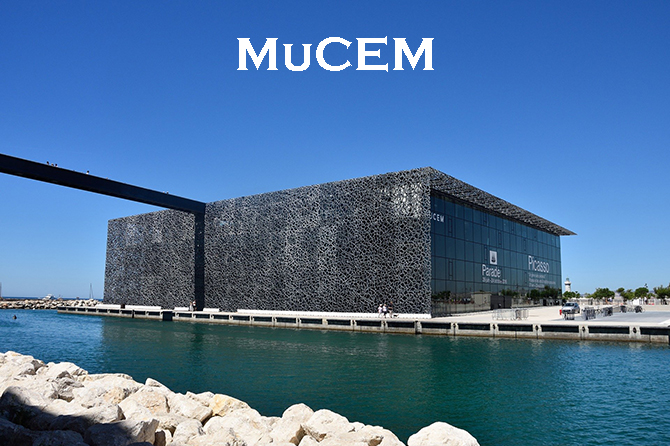City-Port charter

The search for synergies between port and urban areas is at the heart of the development vision for the eastern harbours led by the Port of Marseille Fos. This strategy is based on both the development of and growth prospects for the eastern harbours and reinventing the partnership between the city and the Port, a unique industrial resource in the heart of Marseille.
CITY-PORT CHARTER
In 2011, the specialist commission focusing on the development of the eastern harbours to 2025 put forward a vision for the future of the Marseille harbours, from Fort Saint-Jean to the Nerthe massif. The vision was agreed by all the associated stakeholders and formed the basis of the "City-Port Charter" signed on June 28, 2013 by the Marseille Urban Community (now Métropole Aix-Marseille-Provence), Ville de Marseille, the Conseil Régional Provence-Alpes-Côte d'Azur, the Conseil Départmental Bouches-du-Rhône, the Marseille Fos Port Authority, Euroméditerranée, the Marseille Provence chamber of commerce and Industry, and the government.
Since 2013, a series of reflections and studies have been carried out on the eastern harbours by the City-Port Charter signatories with a view to meeting the goals of the projects identified in the Charter.

The Port of Marseille Fos has reaffirmed its commitment to the City-Port project’s shared development vision. The development strategy aims to preserve and enhance the specific characteristics of the eastern harbours: an industrial facility in the heart of the city including a unique ship repair facility, multi-purpose quays dedicated to the rapidly developing intra-Mediterranean and passenger traffic, a unique interface with the regional capital, that should be developed in synergy with the urban players.
The City-Port Charter ratifies the segmentation of the 10 km coastal strip of the port territory into three parts in which the geography, the relationship with the city and the development potential result in clearly identifiable purposes. These form a framework for current and future projects.

Southern segment: a showcase for port and urban outreach
On the area from the J4 esplanade to the Arenc pier, the port territory is an integral part of the city centre and is associated with the Euroméditerranée initiative.
The development strategy for the seafront is based on the principle of mutual enhancement of urban and port spaces, following on from previously completed city-port interface projects (Terrasses du Port, Silo d'Arenc) and based on a number of key orientations over the next few years:
- Continue to enhance the spaces in the heart of the city by developing innovative city-port projects, subject to their compatibility with port activities.
- Promote the accommodation of high-end cruise ships on the prestigious J4 quays.
- Continue the reorganization of passenger traffic by transferring international traffic to Cap Janet and consolidating Corsican traffic in the Arenc and La Joliette basins.
The new activities should be integrated into a predominantly landscaped sector and therefore meet the requirement for high quality architecture and integration into the local culture and heritage, while also maintaining port activity.

Centre segment: the industrial port looking towards the Mediterranean
From the Arenc jetty to dry dock 10, the Port asserts its port and industrial identity which is fully recognized by the city of Marseille and all the Charter’s signatories. The Port provides the activities and jobs the city needs and transports goods to the nearby industrial base. In addition, the central sector of the eastern harbours is where most of the Port's growth in Marseille is concentrated - in terms of cargo, passengers and industrial sites.
In this context, the main challenges in the development strategy are as follows:
- Preserve the industrial and commercial vocation of the eastern harbours and the diversity of the traffic.
- Be in a position to anticipate and adapt to customers' needs for growth and competitiveness.
- Pursue industrial diversification that generates skilled jobs and is linked to the energy transition.

North segment: a magnet for pleasure craft and tourism
From the Saumaty harbours to l'Estaque, the Port is keen to support the current priority purposes related to tourism, tourist services and leisure activities, while continuing to welcome new activities.
The development priorities for 2024 revolve around three main areas:
- Initiate a process of reflection about developing the supply of pleasure boat accommodation in Estaque to meet the increase in demand.
- Reclassify the Estaque coastline in order to sustainably increase the attractiveness of the sector.
- Transform the low value land in the Lave sector by reconciling economic development projects with new high-quality uses of the seafront for the benefit of local residents.

The City - Port Dialogue
The City-Port Dialogue is fully consistent with the City-Port Charter. Launched in 2019, it responds to the demand of local residents to be kept informed about and involved in port projects that impact their surroundings.
It aims to foster good neighbourly relations between the various stakeholders in the city-port interface.
On this basis, the city-port dialogue ultimately aims to facilitate the emergence of port projects, integrate port activity into the territory on the basis of a win-win approach and contribute to stimulating and reclassifying the Port's hinterland. All the actions can be seen here: https://www.dialoguevilleportmarseille.fr

